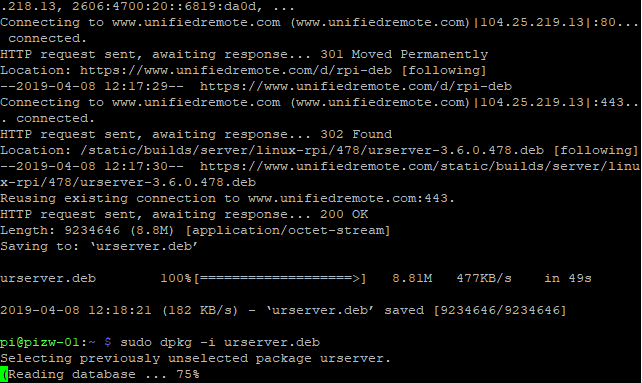

- #How to set up retropie with a desktop environment how to
- #How to set up retropie with a desktop environment install
- #How to set up retropie with a desktop environment software
- #How to set up retropie with a desktop environment download
Thanks to discord user aaronbpaden for his Gnome Shell Extension - White Border Overlay that he has created. 2) MATE is a slicker interface than LXDE (the desktop included with. One method to create a border overlay is through Gnome which is a very popular desktop environment that is compatible on many Nix OSes. The border overlays allow the Sinden Lightguns to function properly for your standalone emulators when RetroArch is not available. You now need to get an overlay border setup using Retroarch, or for standalone emulators, see the following section.īorder Overlays might be required if you are not using RetroArch on Nix systems and are using standalone emulators.
#How to set up retropie with a desktop environment software
Execute them to start / stop the Sinden lightgun software.Īfter the required libraries are installed, the Sinden Software can be started and your gun will function.Move the scripts referenced in setup-retropie.sh (into whatever folder you wish based on your Nix environment).Load required libraries listed in setup-lightgun.sh.Gives you a list of required software that's needed to run the Sinden software. Obviously, you'll need to modify that to put those scripts somewhere else that your front end can access, or just from CLI if you wish. Gives someone using RetroPie access to run scripts that start and stop the lightgun processes via retropie frontend. You will see a flashing light on the drive when its connected. Unplug the flash drive from your computer and connect it to the Raspberry Pi. First, connect the flash drive to your computer and create a folder named retropie on the drive. Inside will be a folder for x86 Linux look over the 2 scripts, setup-retropie.sh and setup-lightgun.sh Make sure it’s formatted to FAT32 to work with RetroPie. Select it using a combination of arrow, tab and/or enter keys (I forgot.
#How to set up retropie with a desktop environment download
While the Sinden Software should run on most Nix systems, check the latest Supported OS Listįirst, download the the latest Sinden software. In this configuration screen, look for the option of Enable Boot to Desktop/Scratch. It is general because not all Nix systems are the same, but follow some of the same principles for software installation.Īlmost all software on Nix systems require 2 things: required libraries loaded and the PATH updated so that the OS user can use them.

This is a general setup guide, and can be used with or without front ends as its general purpose is to get the software libraries installed to allow the Sinden Lightguns to function properly. RetroPie Version Used: retropie-4.4-rpi2_rpi3.Operating systems that are Linux based, Unix based or Linux like will be referred to simply as Nix systems for this article. Power Supply used: 5V 2.4A Switching Power Supply with 20AWG MicroUSB Cable
#How to set up retropie with a desktop environment install
If it is not possible with just the image below do I need to install Raspbian OS on the SD card, insert it, boot and then copy Retropie over onto it?Īlso as side question while I'm thinking about it.does 2 wireless Bluetooth Dual Shock 4 controllers work well, or would there be some conflicts?
#How to set up retropie with a desktop environment how to
How To Build A Bartop Arcade Machine With A Raspberry Pi In this video I build a bartop arcade machine from a half sheet of MDF using a raspberry pi.

My question is: Does the image below contain "both" the "Retropie" and "Raspbian OS?" How will I be able to change between Retropie and Rasbian OS Desktop environment? Is this possible with only the image below? Related Video with How To Install And Set Up RetroPie Easy Guide Raspberry pi 3 2 1 Or Zero How To Build A Bartop Arcade Machine With A Raspberry Pi. However I want to be able to use Raspbian OS Desktop environment. I assume I will be taken to the Retropie setup screen. Say I use the image below, put it on the SD card and boot up the system. Then click Screen Configuration to load the tool that we are after. Within the start menu, hover over Preferences. Clicking this icon will bring up the start menu. I'm building a Pi 3 B+ system for a friend that will use "Retropie" for the frontend. While on the desktop interface of your Raspberry Pi, click the icon in the top-left hand corner of the screen. It's been so long since my last Pi 3 build I feel the need to ask the question again after reading posts for the past hour on forums. this guide because you want the PIXEL desktop environment, you can already install it on the stock RetroPie SD image by.


 0 kommentar(er)
0 kommentar(er)
